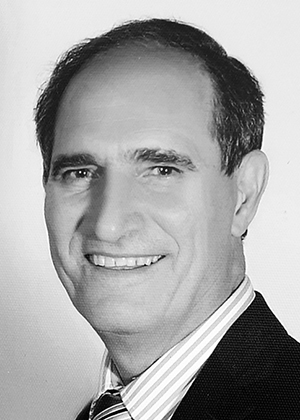Citation

Majid Hassanizadeh has made seminal contributions to hydrological sciences through pioneering and highly impactful research in the formulation of fundamental theories for flow and transport in porous media and is most deserving of receiving this honor. With this recognition, he joins a group of world leaders and pioneers who changed the field of hydrology with lasting scientific and broad societal impacts.
Dr. Hassanizadeh, in his almost 40-year-long career, has made significant contributions to the fundamentals of porous media processes that have led to a new paradigm in modeling critical porous media–related processes in the hydrologic cycle, geologic media, and industrial systems. Early in his career, in collaboration with William Gray, he developed a rigorous and unified approach based on averaging and the principles of physics and thermodynamics, referred to as the “hybrid mixture theory” and “averaged thermodynamic approach” for basic porous media process formulation. The approach has been employed to derive new and advanced theories for non-Fickian and high-concentration dispersion and nonequilibrium capillarity and to extend Darcy’s law for two-phase flow. This work identified a new macroscopic state variable for two-phase flow, called fluid-fluid specific interfacial area, which explicitly accounts for the physics of phase interfaces and allows physically based modeling of capillary effects. He also derived a theory that allows computing the distribution of fluid saturation fields as well as the spatial and temporal variations of the average interfacial area. His pioneering work has contributed some of the few new additions to theories of two-phase flow that have existed for decades. These formulations have also resulted in a vast body of research by mathematicians, experimentalists, and numerical modelers. The power of the averaged thermodynamic approach was further demonstrated through the introduction of the new concept of the “representative elementary watershed” that allows for physically based modeling of hillslope processes and channel networks.
Majid’s services to the field as an editor and associate editor of leading hydrology journals, organizer of major conferences, and mentor of young researchers are unparalleled. As a scientist with a vision and a sense of service to the community, he set up the International Society for Porous Media (InterPore), dedicated to establishing porous media science as a new discipline. Majid’s leading role in porous media research has earned him numerous awards and recognitions, including the Royal Medal of Honor of the Netherlands (Knight of the Order of the Netherlands Lion), which is one of the highest civilian awards.
—Tissa Illangasekare, Colorado School of Mines, Golden
Response
I am extremely honored to receive the Horton Medal. After a long journey in research and education, it is the most rewarding feeling to know that many have found value in my work. I am grateful to my nominator, Tissa Illangasekare, and supporters Mike Celia, Rien van Genuchten, and Günter Blöschl, who have followed my work closely and, most importantly, have offered their sustained support and valuable friendship.
When I was a child in Iran, I was always fascinated by natural springs, where the water seemed to appear from nowhere. Also, qanats that bring groundwater to the land surface by gravity were a mystery to me. Reading through Persian literature, one notices the precious role groundwater played in the rich Iranian history and civilization. No wonder, in pursuing advanced studies, I chose groundwater as my focus. My Ph.D. research was in obtaining generalized laws of fluid flow in porous media. Under the guidance of William Gray, I was able to develop a unified approach based on combining volume averaging and rational thermodynamics for deriving equations governing fluids flow and solute transport in porous media. This work led to a truly generalized Darcy’s law for two-phase flow and a related nonequilibrium capillarity formulation. According to standard two-phase flow theory, capillary pressure is equal to the difference in individual fluid pressures, and saturation is the only state variable needed to describe the flow behavior. My work allowed me to question these long-standing assumptions. In particular, it showed that we need to include information about how fluids are distributed in the pores at a given saturation, and it naturally led to the introduction of fluid-fluid interfaces as a new state variable for fully characterizing two-phase flow. There is now overwhelming evidence that at any given saturation, fluids within pores can be distributed in many different configurations. The developed interfacial area model of two-phase flow and the nonequilibrium capillarity model have allowed us to describe complex processes in industrial porous media, such as diapers, fuel cells, and paper.
I am very aware that lifetime achievements, recognized by the Horton Medal, are not achieved by one individual. I have been blessed to have had the best people to help me realize this achievement. I am enormously grateful to my family, students, collaborators, and colleagues for their countless contributions over the years, helping me to get here. I proudly share this recognition with them while dedicating the medal itself to all Iranian scientists who, under very trying conditions, continue exploring new knowledge in many creative ways.
—S. Majid Hassanizadeh, Department of Earth Sciences, Utrecht University, Netherlands
Citation:
(2020), S. Majid Hassanizadeh receives 2019 Robert E. Horton Medal, Eos, 100, https://doi.org/10.1029/2020EO137823. Published on 21 January 2020.
Text © 2020. AGU. CC BY-NC-ND 3.0
Except where otherwise noted, images are subject to copyright. Any reuse without express permission from the copyright owner is prohibited.
